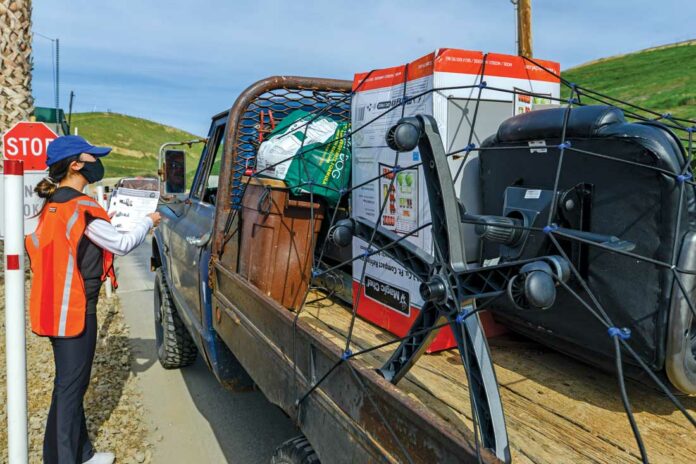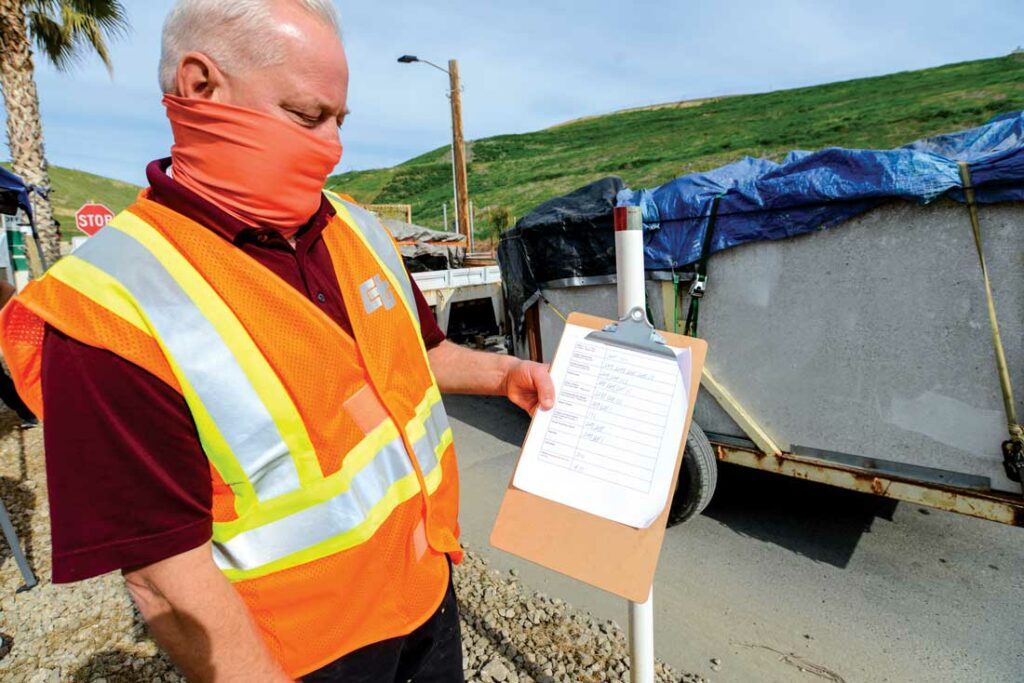
San Benito County’s growing pains are starting to hit the John Smith Road Landfill, which is quickly approaching its 15-year reserve capacity for local-only garbage.
As of April 1—due to a recent vote by the board of supervisors—the landfill’s operator, Waste Solutions Group, will likely stop accepting out-of-county trash at the San Benito County landfill. That’s because the facility is expected to reach its 15-year in-county capacity threshold on March 30, triggering a contract clause that halts garbage flow from customers outside the county.
On Jan. 25, the San Benito County Board of Supervisors voted 4-1 to reject a request by Waste Solutions to apply for a permit from CalRecycle for a medium volume transfer station at the John Smith Road site. The transfer station would have allowed Waste Solutions to move up to 100 tons of garbage per day off the local site to another landfill, extending the facility’s 15-year local reserve limit to a future date, according to Paul Nelson, JSRL Waste Center Operator.
Nelson noted that the transfer station may not be required even if it is approved, but would be a “contingent plan” if a proposed expansion of JSRL is rejected in the coming months.
The landfill has become a concern for some local residents who are anxious about the JSRL expansion proposal from 95 to 483 acres, and the potential mounds of garbage—and the truck traffic and road damage that comes with it—that would continue to enter the facility from outside San Benito.
“I have had an overwhelming number of people contacting me (who are) not in support of the (transfer station) permit,” Supervisor Elizabeth Dirks, who represents the district that includes JSRL, said at the Jan. 25 meeting. “I’d like to see where we land with the expansion before we move forward.”
Under a contract with the county, which owns JSRL, Waste Solutions must stop accepting out-of-county waste when the remaining disposal capacity falls below the quantity needed to accommodate 15 years of in-county garbage flow. That’s a drastic change from current operations, in which about 80% of trash disposed of at JSRL comes from outside the county, bringing San Benito about $1.4 million in annual revenues from landfill fees, Nelson explained.
But the supervisors and many members of the public don’t seem to be overly bothered by that revenue loss. Rather, they see a more crucial need to protect the landfill’s local reserve capacity.
“I’ve heard from the public, and the primary concern is of course the out-of-county waste traffic coming in, and then truck traffic going out under a transfer station model,” Supervisor Kollin Kosmicki said Jan. 25. “Another priority for me is, we really have to protect this 15 years of in-county waste.”
Nelson told the board that a medium volume transfer station would include five trucks leaving and entering JSRL each weekday. But with the absence of out-of-county garbage traffic, the transfer station would produce an overall decrease in traffic at the landfill.
Supervisor Bob Tiffany said, “A creative approach for keeping this 15-year reserve through a transfer station is not, in my mind, the same as keeping the 15-year reserve on site.”
Board of Supervisors Chair Bea Gonzales was the only supervisor who supported Waste Solutions’ effort to apply for a transfer station permit.
In a separate process, Waste Solutions has applied for a major expansion of JSRL, which is located at 2650 John Smith Road. The proposal would expand the landfill’s current footprint from 95 acres to 483 acres, and from 1,000 daily tons of garbage to 2,300 tons per day.
Total disposal capacity would increase from 9.35 million to 58 million cubic yards, and the waste footprint would rise from 58 to 253 acres. Furthermore, the maximum elevation of the landfill would increase from 920 feet to 949 feet above sea level.
The expansion would also widen John Smith Road Landfill’s entrance area to accommodate more truck traffic; and add interior roadways, soil stockpiles, stormwater retention basins and open space, according to the county’s notice of environmental impact report.
The landfill operator also proposes installing a “gas-to-energy” facility that would use methane from decaying organic materials to produce natural gas, according to the notice of EIR.
The proposal is currently undergoing an EIR to study the potential impact of the applicant’s preferred project, as well as a number of alternatives. The draft EIR is expected to be complete within the next six months to one year, and after that would follow another lengthy public review process before it is approved.
County officials noted that if an expansion of JSRL is approved, it would increase the capacity far beyond the 15-year in-county reserve minimum. Thus the landfill could resume accepting out-of-county garbage again.










